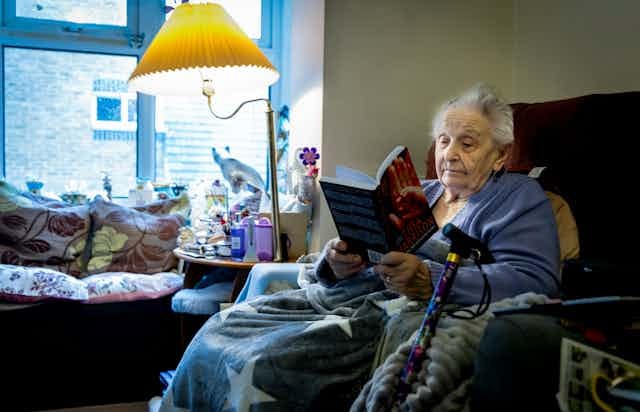Australia’s subsidised aged care services now help around 1.5 million older people to receive care and support. Taxpayers contributed A$28 billion to the various programs in 2022-23. And yet the system is governed by an act that was first passed in 1997.
A lot has changed over the past two and a half decades – more people are living longer with chronic conditions and impairments that necessitate care, more of that care helps people stay in their own home, older people have more choice and control, and quality and safety are subject to tighter regulation and improved enforcement.
These and many other reforms are welcome. But as a result, the 1997 Aged Care Act has become a patchwork of change upon change. So when is the new act due, and what does it aim to achieve?
Read more: How to complain about aged care and get the result you want
What we know so far
Following the report of the Royal Commission into Aged Care Quality and Safety, the government is rewriting the act with a view to it commencing on July 1 2024 – less than five months from now.
Parts of an initial draft of the act have been released for public consultation. The proposed act adopts a rights-based approach to caring for older Australians, and consolidates and simplifies multiple pieces of existing legislation.
Some of the improvements will include:
establishing a complaints commissioner to increase the independence and transparency of investigating aged care complaints
increasing whistleblower protections so older people, their families and aged care workers feel comfortable about exposing unacceptable treatment from a provider
streamlining access to aged care through a single-assessment process, rather than older people having to be assessed by different organisations depending on their particular care needs.
But several significant issues have yet to be addressed. The partial draft of the act lacks any provision relating to the proposed fees, payments and subsidies, or about how people with different needs will be prioritised and how aged care places will be allocated to them.
The act also makes many references to the government making rules about how the aged care system will actually operate. As always, the devil is in the detail but the rules have not yet been made public.
Read more: How do I handle it if my parent is refusing aged care? 4 things to consider
The new act also attempts to address the fundamental concern that Australia’s Constitution doesn’t provide the federal government with powers to make laws specifically for “aged care”. This is unlike the government’s powers over banking, marriage, the age pension and many other matters.
Instead, the act attempts to patch together a range of other powers, such as for providing sickness and hospital benefits and making binding international treaties (including disability support) under its external affairs powers.
It is unclear whether this approach will make the system too complex, compared with seeking agreement from the states to refer their powers to the federal government, or to enact a common set of laws on which both levels of government agree.
Federal Parliament will have the final say on what the act will contain and when it is passed.

How does this fit with other recent changes?
The new act aims to provide an enduring structure that brings the current aged care system, including recent reforms, into a single consistent regulatory regime.
The newly introduced residential care workforce standards, for instance, will be carried over to the new act. They include the requirement for 24/7 cover by registered nurses so nurses are always available to care for a resident when needed, at any time of the day or night.
The new levels of care minutes that nurses and other personal care workers must provide to residents will also be part of the new act.
The act will also include the Star Ratings for individual aged care homes. These help inform residents about the quality of the care their homes provide.
Read more: What do aged care residents do all day? We tracked their time use to find out
Will this be it for a while?
The recent changes to aged care are not the end of the decade-long reform journey.
In the immediate future there will be changes to payment arrangements for care as the government responds to the – yet to be released – report of the Aged Care Task Force.
Following that, a new Support at Home program is being designed to consolidate and streamline the current home care packages, short-term restorative care and respite care. Having already been deferred twice in recent years, the current proposed start date is July 1 2025.

The drafting of a modern, simplified act is an important opportunity to provide the best legislative regime for caring for older Australians.
But such an opportunity comes only once every decade or two. While the new legislation needs to put older people at its centre, it must also facilitate a system that is sustainable and sufficiently robust to support them to access subsidised care when they need it.
The broad framework is there, but there are less than five months to get the details right.
Read more: Aged-care funding reforms must ensure users pay their fair share

